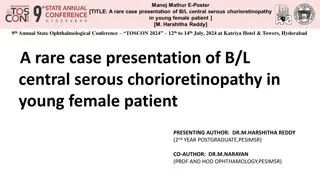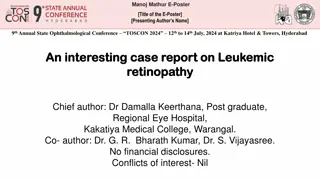Case Study: Interesting Hemothorax Presentation
A 25-year-old male laborer presented with a history of fall from height resulting in blunt trauma to the back of his chest and lower back. He experienced localized pain, weakness in the right lower limb, and breathlessness. Initial treatment included chest tube insertion and blood transfusion. General and systemic examinations along with investigation values were recorded to assess the patient's condition.
Download Presentation

Please find below an Image/Link to download the presentation.
The content on the website is provided AS IS for your information and personal use only. It may not be sold, licensed, or shared on other websites without obtaining consent from the author.If you encounter any issues during the download, it is possible that the publisher has removed the file from their server.
You are allowed to download the files provided on this website for personal or commercial use, subject to the condition that they are used lawfully. All files are the property of their respective owners.
The content on the website is provided AS IS for your information and personal use only. It may not be sold, licensed, or shared on other websites without obtaining consent from the author.
E N D
Presentation Transcript
AN INTERESTING CASE OF HEMOTHORAX PRESENTED BY DR OMKAR GUTTA RESIDENT UNDER THE GUIDANCE OF FACULTY OF UNIT 2 GENERAL SURGERY
CASE SUMMARY A 25 year old male, a labourer by profession was referred to the casualty from private hospital on 10/3/2021 at 6am with the alleged history of fall from height (around 15-20 feet) on his back while working at a construction site near tathawade on 6/3/21 at 1pm. Patient C/O blunt trauma to back of chest and lower back Followed by which patient experienced localised pain in the back of chest and in the lower back with sudden weakness of right lower limb Patient also C/O breathlessness after the trauma No history of loss of consciousness, ENT bleed No history trauma to head, fever No history abdominal pain, nausea and vomiting
Treatment History Patient was taken to private hospital and diagnosed as left hemothorax for which ICD was inserted which drained 3600ml in 3 days, following which 3 units PCV was transfused Past History Not significant Family History Not significant Personal History Not significant
GENERAL EXAMINATION Conscious, cooperative and well oriented to time, place and person Averagely built and nourished Afebrile Pulse rate : 102 per minute Blood pressure : 120/80 mm of Hg Respiratory Rate : 19/minute SPO2 : 85% on room air GCS- 15/15 No pallor, icterus, Cyanosis, Clubbing, Generalised Lymphadenopathy, Pedal oedema
SYSTEMIC EXAMINATION RESPIRATORY SYSTEM EXAMINATION INSPECTION skin appears normal, ICD drain in the 5thintercostal space, chest expansion decreased on the left side PALPATION tenderness present at the left chest wall at the 5th, 6th, 7thand 8thribs posterior aspect, no Crepitations PERCUSSION dull note on left lower thorax AUSCULTATION Decreased air entry on left lower side PER ABDOMEN EXAMINATION Soft, non tender, other parameters within normal limits OTHER SYSTEMIC EXAMINATION Within Normal limits
INVESTIGATION VALUE INVESTIGATION VALUE HB 7.2 UREA/S.CREATININE 37/0.4 TLC 13300 Na+/K+ 142/4.3 PLATELETS 1,37,000 P/L/M/E 85/5/10/0 RBS 142 ESR 8 PT/INR 12.7/1.15 BLOOD GROUP A POSITIVE HIV/HbsAg/HCV Non-reactive TOTAL BILIRUBIN 0.66 CONJUGATED BILIRUBIN 0.34 COVID RTPCR Negative UNCONJUGATED BILIRUBIN 0.32 SGOT/SGPT/ALP 208/81/46 TOTAL PROTEIN/S.ALBUMIN 4.7/2.4
IMAGING CECT (Abdo+Pelvis) Laceration of Left hemidiaphragm (14X7cm) with intrathoracic herniation of spleen, pancreatic tail, mesentery and colon with splenic lacerations and arterial bleed with devascularisation (>50%) graded as AAST GRADE IV INJURY. A subcapsular hematoma measuring 6 mm in thickness, along posterior aspect of spleen also noted Moderate left hemopneumothorax (volume 275 cc) in the left lower lobe of lung with ICD in situ in the 5thintercostal space whereas mild right haemothorax in the right lower lobe of lung Fractures of the 9th10thand 11thribs with linear fractures of transverse processes of T10, T11, L1 and L2 vertebrae and comminuted displaced right scapular fracture
LACERATED DIAPHRAGM INTRAOP PICTURE LACEARTED DIAPHRAGM SUTURED INTRAOP PICTURE
MANAGEMENT As the patient was vitally stable and there was no evidence of acute abdominal injury, the patient underwent Diagnostic Laparoscopy to confirm the CT findings There was evidence of pulled up mesentery, spleen, transverse colon and omentum towards left hemithorax with evidence of splenic laceration on upper pole with active bleeding on the same side Patient further underwent exploratory Laparotomy. The intra-op findings were suggestive of splenic rupture at the upper pole with active bleeding, 15X10 cm rupture in left hemi-diaphragm with herniated transverse colon, omentum, spleen in the left hemithorax through it. There was evidence of 500 ml intrathoracic collection of blood and about 500 ml of blood collection in perihepatic and splenic fossa Patient further underwent splenectomy with repair of diaphragmatic rupture A 28 number abdominal drain was placed in situ
DISCUSSION This case is unique due to the rarity of such occurrence and is interesting as sometimes the emergency assessment points out to tension pneumothorax in such cases. In such cases of polytrauma, the diagnosis of diaphragmatic rupture can go undetected mainly because of other more apparent findings such as hemothorax become the point of initial focus. Spleen and liver injury were the commonly associated injury in blunt diaphragmatic rupture after bone fractures
The patient in this case presented with pain in the left hypochondrium and left upper back. The common clinical symptoms in diaphragmatic rupture are marked respiratory distress and diffuse abdominal pain. Rapid diagnosis can be done in bedside with ultrasound (eFAST) later supported with adjuvant imaging modalities like Xray and CT scan. Major features in plain radiographs (Chest X-ray) like loss of diaphragmatic contour, elevated left diaphragm than the right (more than 4 cm), small or large bowel in chest, gas bubbles in the chest, presence of nasogastric tube in the chest, and pleural collection with obliteration of the costophrenic angle, mediastinal shift, pneumothorax, hemopneumothorax, loss of gastric bubble under left cupola and/or pneumoperitoneum may suggest diaphragmatic rupture
CT scan is a valuable tool in detecting diaphragmatic hernia with blunt abdominal trauma. The CT signs of diaphragmatic injury include direct visualization of injury with free edge of the disrupted diaphragm, intrathoracic herniation of visceral content, collar sign, dependent viscera sign, intramuscular hematoma and peridiaphragmatic active contrast extravasation. Overall, multi-detector CT scan has a sensitivity of 78% for left sided diaphragmatic injuries with specificity of 100% Treatment of traumatic diaphragmatic rupture is surgical with abdominal approach (laparotomy) for repair in acute cases. In chronic case, thoracic approach (thoracotomy) can also be used
Diaphragmatic rupture is a rare condition(0.46%) following injury mainly caused by penetrating trauma (2/3 cases) followed by blunt trauma in rest of the cases Prevalence of the rupture in young males in mid thirties with a majority of cases with left sided rupture (75% of cases) mainly because the right side of the diaphragm is protected by liver Left sided diaphragmatic injury is commonly associated with herniation of the spleen and stomach into the thorax.
The most concerning effects of diaphragmatic rupture are compromise of diaphragmatic function, intra-abdominal bleeding from viscera injury, herniation related strangulation with laceration and impairment of venous return to the heart These injuries need to be addressed quickly by surgical approach either from thoracotomy or laparotomy
TAKE HOME MESSAGE Although a rare entity, diaphragmatic rupture can occur in cases of blunt abdominal trauma. It can be associated with herniation of abdominal contents into the thorax. High clinical suspicion with imaging helps in the diagnosis. Chest tube insertion should be done with caution in such cases
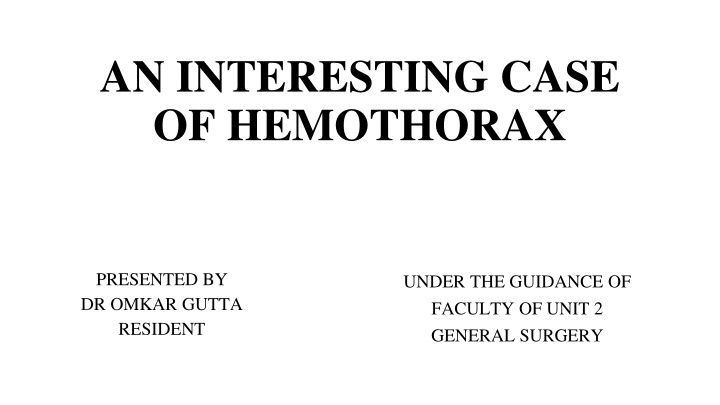




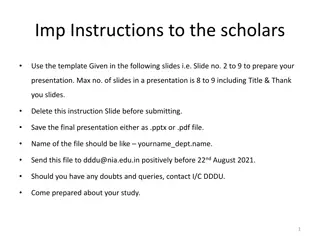

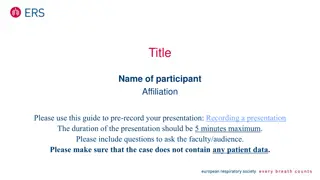

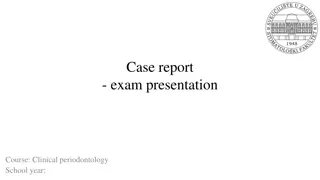
![Comprehensive Case Study on [Insert Case Title Here]](/thumb/159705/comprehensive-case-study-on-insert-case-title-here.jpg)










